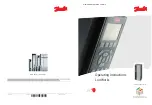
Chapter 16
449
W-CDMA Uplink Digital Modulation for Receiver Test
Understanding the PRACH
Understanding the PRACH
Overview
The PRACH is used by the UE (user equipment/mobile) to signal and establish communications with a base
station. It consists of two components, a preamble and message part. However the PRACH, in an actual UE
to base station application, initially transmits only the preamble. The preamble is used to signal the base
station that a UE is trying to establish a connection, and is repeated until it receives an acknowledgment in
the form of an AICH (acquisition indication channel). Once the preamble has been identified by the base
station, the base station transmits the AICH. When the UE receives the AICH, it then sends the message part
of the PRACH transmission. The message part contains the synchronization and request data used in
establishing the base station connection.
There are two modes of PRACH operation within the ESG, single and multiple PRACH. The single PRACH
mode offers greater flexibility in configuring the PRACH signal, whereas the multiple PRACH mode gives
you the ability to transmit multiple PRACHs within an 80 ms time period. In this mode, you can configure
up to eight different UEs each having its own signature. In addition, each UE can transmit multiple PRACHs
within an 80 ms time period.
The ESG gives you the option of transmitting only the preamble or the preamble and message part. This
gives you the ability to simulate an actual PRACH transmission where multiple preambles may be
transmitted before the UE receives an acknowledgment (AICH) from a base station. In the single PRACH
mode, you can even configure the message part to transmit when an AICH trigger is received.
In addition to controlling many other parameters of the PRACH, you can adjust the preamble power, the
message part power, the distance between the preamble and the message part, the number of preambles prior
to the message part transmission (single PRACH mode only), and select a slot format according to the 3GPP
standards.
Access Slots
The access slots provide a well defined time interval for indicating the beginning of a PRACH transmission.
An access slot is 5120 chips long (1.33 ms) and there are 15 access slots per two 10 ms radio frames (or 7.5
access slots per radio frame). A radio frame segments the transmission into blocks of time and assists in
synchronizing the mobile transmission with the base station. So a 20 ms message part is transmitted over
two consecutive radio frames.
Access slots apply to both the uplink and downlink transmissions. In an actual UE to base station
transmission, the UE transmits its access slots before it receives the base station’s transmission of access
slots, thus creating an offset between the two. This offset is used to time the reception of the AICH by the
UE. This timing/offset of the AICH is called Tp-a (the distance from the beginning of the preamble to the
beginning of the AICH transmission) and is defined in the 3GPP standards. The PRACH also uses the access
Summary of Contents for E4428C
Page 22: ...Contents xxii ...
Page 224: ...200 Chapter 4 Basic Digital Operation Creating and Using Bit Files ...
Page 228: ...204 Chapter 5 AWGN Waveform Generator Configuring the AWGN Generator ...
Page 229: ...205 6 Analog Modulation ...
Page 276: ...252 Chapter 7 Digital Signal Interface Module Operating the N5102A Module in Input Mode ...
Page 286: ...262 Chapter 8 Bluetooth Signals Turning On a Bluetooth Signal ...
Page 330: ...306 Chapter 9 BERT Verifying BERT Operation ...
Page 366: ...342 Chapter 10 CDMA Digital Modulation IS 95A Modulation ...
Page 394: ...370 Chapter 12 Multitone Waveform Generator Applying Changes to an Active Multitone Signal ...
Page 468: ...444 Chapter 15 W CDMA Digital Modulation for Component Test W CDMA Frame Structures ...
Page 667: ...643 18 Troubleshooting ...
Page 700: ...Index 676 Index ...
















































